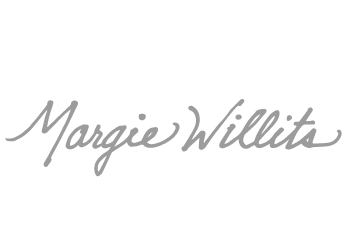Margie Willits
Started out her art career in 1977, at the age of 20 when she was hired by Alaskan Silver and Ivory Company in Bellingham Washington. It didn't take long to learn the trade of etching and applying color into, at first, small ivory jewelry pendants, earrings, and rings. Later she progressed to larger pieces of prehistoric mammoth, and fossil walrus ivory. Also whales teeth. The softer surface of the mammoth was usually easiest to etch into. Fossil walrus artifacts have a harder surface and also have developed an interesting color from years of laying in mineral laden soils until discovered and sold to the scrimshaw trade by native peoples. Eskimos, many hundreds of years ago, would often discard the heavy tools made from walrus tusks at various fishing and hunting camps, rather than carry them on their journeys. Occasionally whale teeth were "scrimmed" on, however, they were not Margies' favorite material as the surface was usually harder to etch. Sometimes newer walrus tusk was scrimmed on as this was legal for native peoples to harvest and sell.
Within a few years Margie was selling her work directly to scrimshaw dealers and art galleries as did many other scrimshaw artists. Studio 600 atop the Bellingham Herald Building, on State street, became a shared studio space for Margie and other scrimshaw artists over the years.
Many of the beautiful wooden holders and bases, and also finely crafted boxes, belt buckles and other items were created by the late Ken Fredericks, who also prepared the ivory for scrimshanders by sanding and polishing it to a smooth mirror surface.
In 1994 Margie left the confinement of her desk and magnifying glass to try her hand at a few murals. The first one was for her sister Mary and husband Mike Kimmich and their new business, Pacific Marine Exchange, which sold marine equipment and marine art. Margie's husband Fritz Willits set up the scaffolding and encouraged her to conquer her fear of heights. After several months it was finally finished. A very physically demanding mural on a crumbling brick wall which required repair work even before starting. It still stands as of today, March 2015.
Then, soon after, a mural for a dental office for its young clients. Over the next few years she worked on some other large building murals together with local graphic artist Karen Theusen.
The Pacific Marine Exchange orca whale mural inspired her first acrylic painting titled "Salmon Hunting"
Taking classes from local painter Lorna Libert helped a great deal in the development of Margies' style. A loose, relaxed technique now stands in contrast to the old scrimshaw days of tight, detailed, realistic renditions with a magnifying glass.
Since then Margie has been painting for pleasure and especially has enjoyed helping friends learn how to paint.

